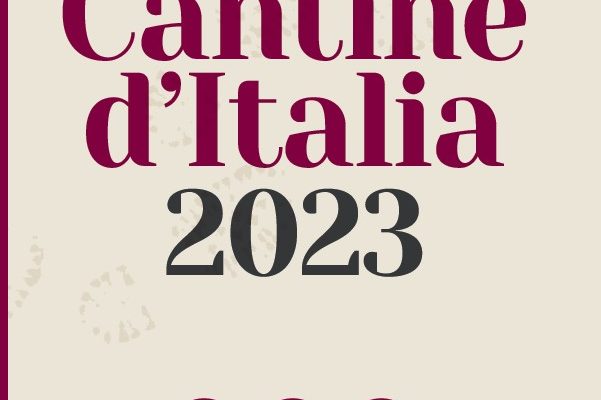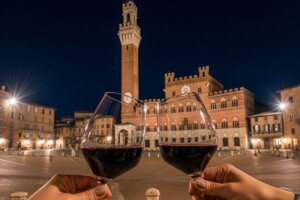A complete studied catalog of the most beautiful and welcoming wineries in Italy, to be discovered, visited, and tasted: The “Cantine d’Italia 2023” guide, edited by Go Wine, contains 830 selected wineries, 251 “Impronte d’eccellenza” for wine tourism, 8 special prizes, over 4,550 recommended wines, and 1,600 useful addresses for eating and sleeping.
A guide designed specifically for wine enthusiasts, that tells and writes about the Italy of wine beginning with the cellar, or rather the place where men and women operate and plan their work, bearers of family stories and traditions or more recent investments. The cellar has become a place for promoting the territory in its own right over the years because it invites you to travel and communicates a territorial identity made up of the landscape, the vineyards, the place’s tradition, and the villages. By telling about the cellar, the events surrounding the wine are told and help to better understand the profile of each company, as well as the wines that each cellar expresses.
In the 2023 edition, there are a total of 251 “Impronte Go Wine”, which represent a sign of “excellence” in the field of national wine tourism and constitute an ideal sign attributed to the wineries that have achieved a high score in the overall assessment of the site, reception and production profile. In the special ranking by region that is updated every year, Tuscany is confirmed at the top with 53 “Impronte”, followed by Piedmont (44) and Veneto (35).
On the other hand, 16 wineries reach the top of the “Tre Impronte Go Wine” in the 2023 edition: Badia a Coltibuono; Bellavista; Ca’ del Bosco; Capezzana; Castello Vicchiomaggio; Ceretto; Donnafugata; Feudi di San Gregorio; Ferrari; Florio; Fontanafredda; Lungarotti; Malvirà; Masciarelli; Planeta and San Felice. There are 11 wineries that obtain the recognition of the “Impronta” for the first time, and, from north to south, they are Cascina Alberta (Piedmont), L’Astemia Pentita (Piedmont), Kettmeir (Alto Adige), La Tordera (Veneto), Gigante (Friuli Venezia Giulia), Pakravan Papi (Tuscany), Tenuta Argentiera (Tuscany), Tenute Silvio Nardi (Tuscany), Sant’Andrea (Lazio), Emidio Pepe (Abruzzo), Conti Zecca (Puglia).
The Go Wine guide does not intend to address only “super enthusiasts”, but rather to provide an opportunity to foster a culture in support of wine and its regions, as well as to encourage people to consider the important role that Italian viticulture plays in the advancement of our country. “There is a basic objective that animates this guide - declares Massimo Corrado, president of Go Wine and editorial director - to tell one of the most beautiful sides of Italy through wine. Vineyards and wine lead us to every region, to many sites and corners of our country. The cellar is the destination, the animated place where stories of wines and people intertwine, where wine is the key to listening to the story of a land, inhaling its atmospheres”.
The volume opens with three “Finestre sul vino”, introductory speeches by journalists Armando Castagno, Andrea Grignaffini, and Luca Ferrua (director of “Il Gusto”). Always under the banner of the theme of the story, and renewing an approach already practiced in previous editions, the volume opens with ten interviews with men and women of wine, exponents of wineries selected in the guide. They are: Romano Dogliotti from Caudrina, Vio Giobatta from Bio Vio, Willi Stuerz from Cantina Tramin, Sandro Tasoniero from Sandro De Bruno, Giuseppe Rigoli from Fattoria Ambra, Carla Fiorini from Fiorini, Fabrizio Santarelli from Castel de Paolis, Elena Fucci from Elena Fucci, Pasquale Iuzzolini from Iuzzolini, Lidia and Pietro Colosi from Colosi.
The volume is generally presented as an articulated repertoire of wineries, alphabetically organized by region and full of data and references. Furthermore, for the fourth consecutive edition, the guide presents the “Autochthonous Routes”: with the symbol of the grape in a stroller (linked to the tour of “Autoctono si nasce” by Go Wine in Italy) wineries that have been conducted in the recent period a work of research and attention in favor of native vines, with an eye to rare or less known ones. In fact, the symbol goes to highlight another feature of the volume: that of giving voice, through the narration of many winemakers, and also to their commitment in favor of local viticulture.
Copyright © 2000/2026
Contatti: info@winenews.it
Seguici anche su Twitter: @WineNewsIt
Seguici anche su Facebook: @winenewsit
Questo articolo è tratto dall'archivio di WineNews - Tutti i diritti riservati - Copyright © 2000/2026









































































































































































































